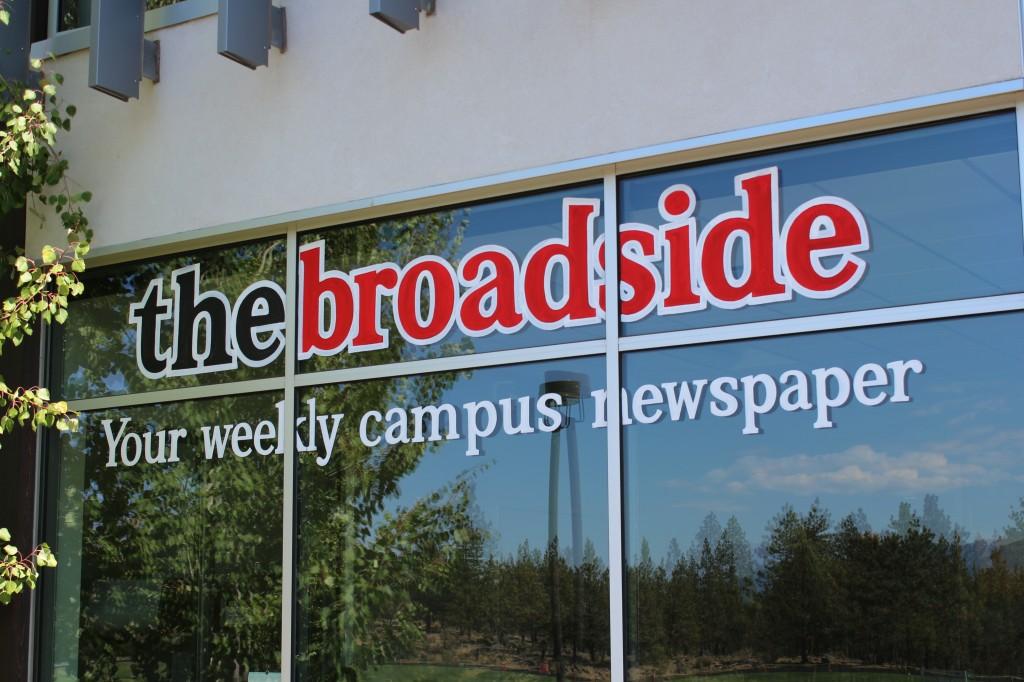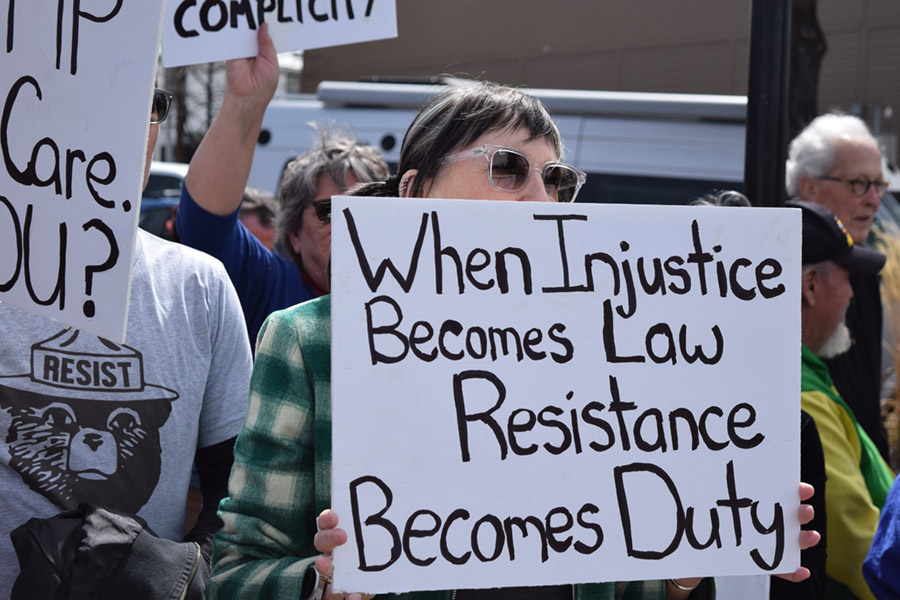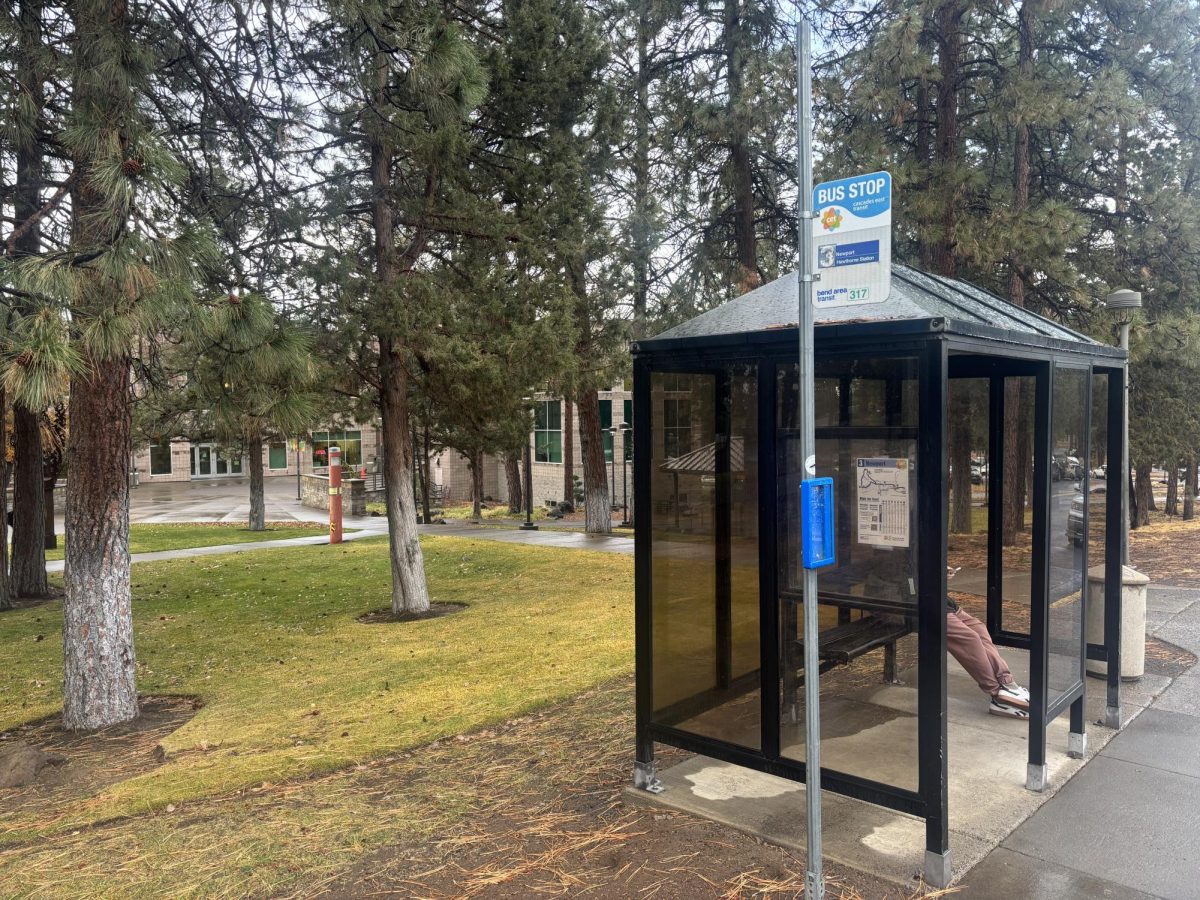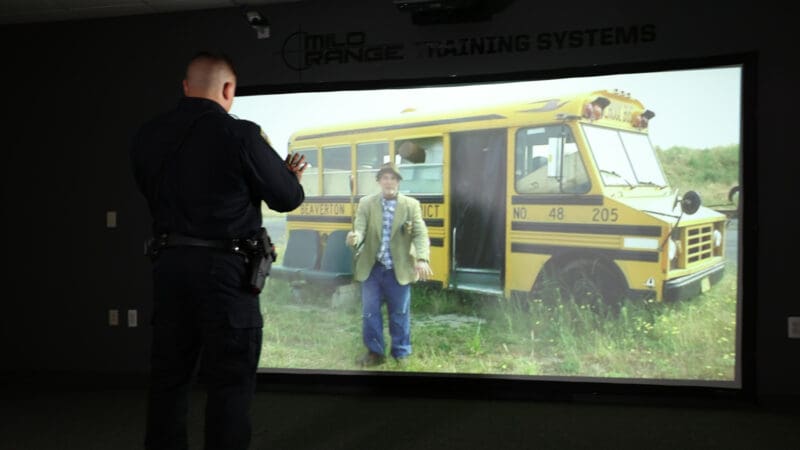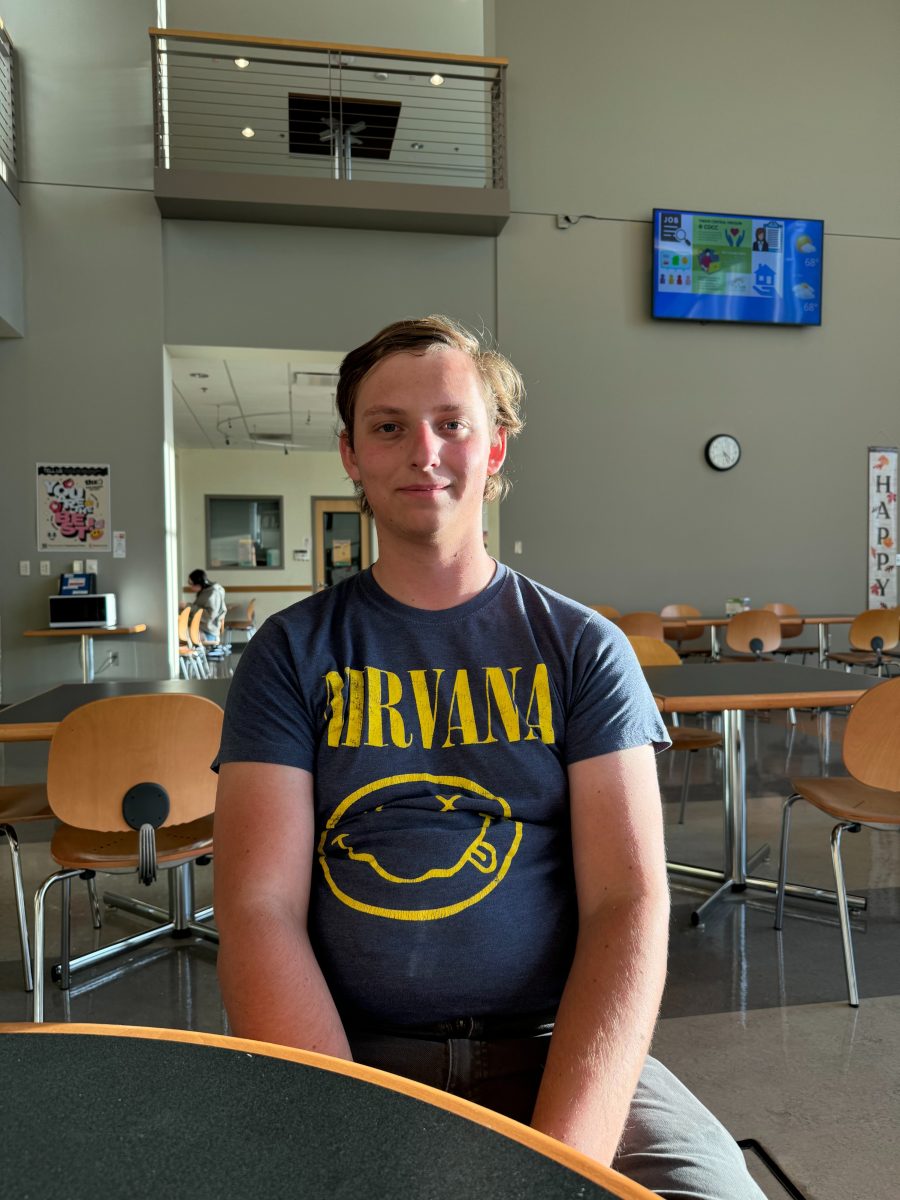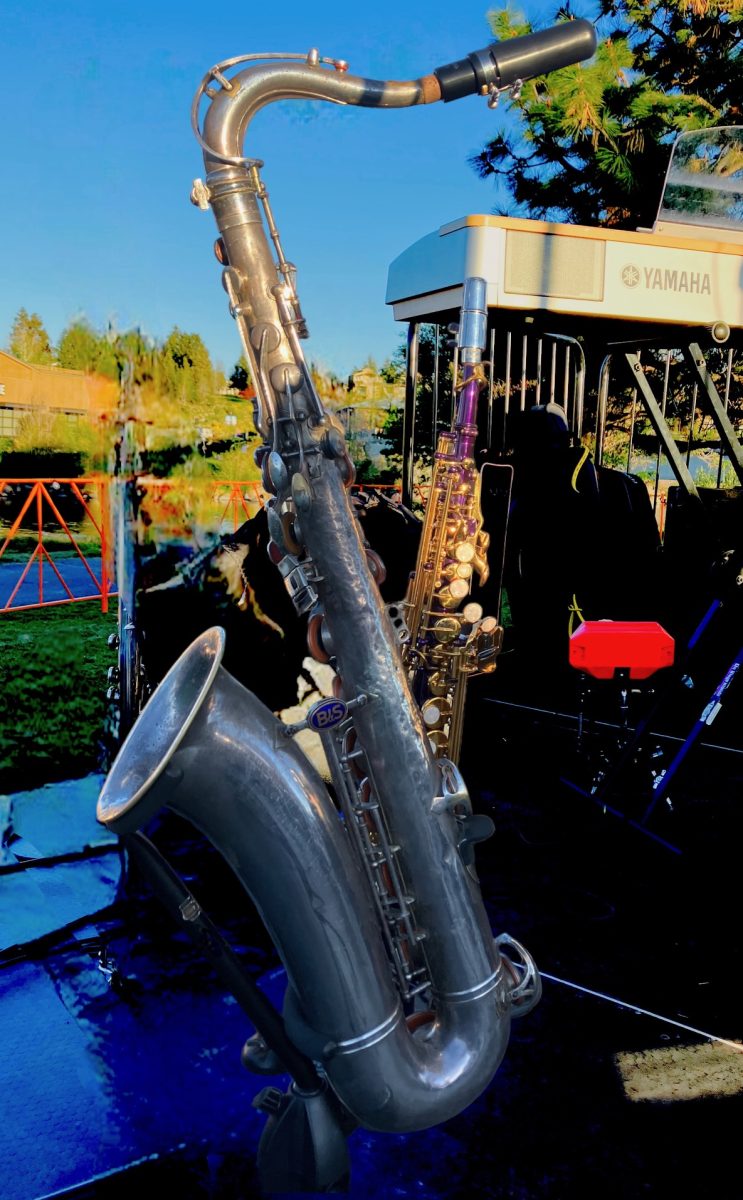The beginning of researching the history of The Broadside started with the celebration of the 70th anniversary. That changed after a long deep dive into the past to find out that this year was actually the 69th anniversary and the date we believed it started, 1952, was not true. The Broadside has a long and rich history, being the oldest institution at COCC. Read on to find out about the ups and downs The Broadside has encountered over the decades.
THE 50’s
The Broadside started in 1953.
Going through the archives of The Broadside and talking to past employees of The Broadside, it seems that sometime around 2013-2015 the date was changed to 1952. With no other evidence that says otherwise, The Broadside will redact the 1952 date and change it back to 1953.
The first issue of the paper was published Oct 15, 1953. June Scott was the first editor-in-chief of the paper, and the staff consisted of five members. By 1957, the staff grew to 18.
In 1957 The Broadside found itself wrapped up in its first controversy:
Robert Chandler, The Bulletin’s editor, wrote an editorial in The Bulletin called the “Mighty Fancy Log” about a bond measure that Don P. Pence, the head of COCC at the time, proposed to the Bend community and school district. The editorial rubbed many students and staff of the college the wrong way. The Broadside came out with an editorial to counteract Chandler’s.


A couple of days after Chandler’s editorial, on the morning of Nov. 15th, a sculpture of Robert Chandler was hung outside of The Bulletin on a flag pole with a sign that read, “Thank you Mr. Chandler for your great support in building C.O.C. (Central Oregon College).” It was suspected that COCC students were behind the hanging.
THE 60’s

In 1964 more controversy struck COCC and The Broadside over the poem Howl:
Professor Ashleigh Brilliant read the banned poem Howl, by Allen Ginsberg, to an unsuspecting public audience made up of children and pre-college youth.
Many talks of freedom of speech surrounded the incident.
1965 came with another controversy surrounding The Broadside:
Kenny Adams, the advisor at the time, burned 1,000 copies of the paper after an unauthorized editorial was slipped into the paper right before being printed.
The editorial was critical of the president of COCC, at the time still Pence, and the publications board.
Adams wouldn’t let the staff pursue issues such as faculty turnover and COC (at the time the college was just Central Oregon College) credits not transferring to California state schools. Seven Broadside staff members resigned and sought the recall of Adams.
During the board meetings surrounding Adams, The Broadside didn’t publish:
Some of the staff members who resigned, re-published the editorial along with the other articles that were published in the issue that was burned in a paper called the “Wildcat”.
THE 70’s
In 1971, The Broadside hosted a workshop for editors from most of the collegiate newspapers in Oregon. This was a workshop designed to allow the junior college’s representing editors to share new ideas in their media
THE 80’s
A segment called “Betty Broadside” was introduced to the paper in 1986; allowing for students/staff at COCC to send in anonymous questions or dilemmas they find themselves in.
The Broadside would research and answer through Betty Broadside. Students would write a letter and leave it in the mailbox outside The Broadside room.

THE 90’s
1990 was another controversial year for The Broadside. The Broadside had three advisers in 16 months. On March 12, 1990, The Broadside reported that one of COCC staff members, John Underwood, misrepresented his credentials:
Underwood was an instructor of health, physical education and a director of COCC’s exercise physiology lab, and the ski coach at COCC. After further investigation, The Broadside found that Underwood had not earned a Master’s Degree as he’d claimed. Underwood resigned. According to an editorial written by The Bulletin, Bob Shotwell, The Broadside’s advisor at the time claimed he was pressured out after The Broadside’s investigation into Underwood.

The following year The Broadside found themselves in hot water after publishing a political cartoon:
Many Central Oregon community members called the school to complain.
COCC Foundation lost nearly a half-million dollars in funding as a result of benefactors’ reactions to The Broadside cartoon.
Death threats were made toward the cartoonist and editor of the paper
The Broadside issued an apology to the community and COCC and provided an explanation of the cartoon.
David Duran, the advisor during the political cartoon controversy, along with Ken Thomas, the third advisor in 16 months, resigned.
Michael Van Meter was the advisor of The Broadside from 1998 to 2001 and a journalism teacher at COCC from 2003 to 2018. Van Meter ushered in an era of new technology for The Broadside. Meter passed away, but Humanities Professor Stacey Donohue, his wife, said, “He was excited when a Broadside journalist live-tweeted a student government meeting in April 2013.”
Cathay Carroll, an advisor for The Broadside, had this to say about Meter:
“Throughout the history of The Broadside, many have had to defend it, something made clear to me by Michael Van Meter, a longtime journalist, COCC journalism instructor, and Broadside advisor, who was beloved and respected by many. He died in 2018 and should be remembered as a key figure in the endurance and excellence of The Broadside.”
– Cathay Carroll
THE 2000’s

The Broadside was a place for students to learn about the world of reporting. The room that housed The Broadside was a place of collaboration, investigation, and creativity.
Keri Donovan was The Broadside’s Editor-in-Chief in 2006. One of her favorite memories was “the collaborative group sessions we had, everyone would gather around the table and (talk). We laughed, ate pizza, and put together some great papers!”
Erin Foote was The Broadside’s advisor from 2006 to 2011. In the years that Foote was the advisor, The Broadside grew from a staff of 18 to 34. COCC offered 4 journalism classes, and those students directly fed into The Broadside.
“There was an editorial written by the editor in chief of the paper, Don Eyle, titled, “It pays to love ASCOCC,” Foote said.
“The editorial was about the president of the student government who had hired her boyfriend to serve a variety of functions in the student government. From IT support to the preparation of meetings.”
According to Foote, the boyfriend was paid around $20,000, from student fees.
“The editorial ran at a time when the student government was under a great deal of scrutiny for decisions around the management of student fees,” said Foote
The boyfriend filed a personal harassment claim with COCC against Don Eyler. The Broadside was able to get Don Eyeler an attorney for the disciplinary hearings. Foote said, “Ultimately these discipline charges against Don were dropped.”
The student government ended up hiring an attorney. They spent $65,000 of roughly the $300,000 of the student fee budget.
“They hired an attorney to defend themselves against the attacks from The Broadside and threats from the college about dissolving the student government because they were so out of control,” Foote said.
Free speech talks were a common thing going around the campus during these intense times in The Broadside’s history
The students at the paper covered these issues in-depth and went on to win many awards. They swept the national awards for community college journalism.
“It was an exceptional experience,” Foote said. “I was most proud to see students not be afraid, to tell the truth.”
One of Foote’s favorite memories was helping design the new Broadside room. The move from the old space to the new one occurred around 2010-2011.
“It was very exciting to be a part of designing the newsroom because the newsroom that The Broadside is in now, at the Campus Center, is new,” Foote said. “Prior to that, The Broadside was in this kind of converted old classroom up in Grandview.”
THE 2010’s
Scott Greenstone was a part of The Broadside from 2011 to 2014 working his way up from reporter to arts and entertainment editor, multimedia/website editor, assistant Editor-in-Chief, and then Editor-in-Chief (2013-2014).
When asked about his favorite memories working at The Broadside, Greenstone said, “The editors were asking for volunteers to write about a civil rights veteran and Freedom Rider, who was coming to campus. I raised my hand; the Freedom Rider, Claude Liggins, and I talked for hours and I remember feeling honored to be able to tell his story.”
“That’s when I began to fall in love with journalism,” Greenstone said.
Cathy Carroll was the advisor of The Broadside from 2017 to 2018. COCC decided to shut down its longest-running institution due to a decline in student involvement and readership.
Carroll said, “When students, Broadside alumni, faculty, staff and people in the community learned about the college decision to shutter The Broadside, they voiced their concerns and convinced the college to reinstate it.”
Claude Liggins’ Freedom Ride started before 1961

The Freedom Rides of 1961 weren’t the first time Claude Liggins was discriminated against on public transit.
Greenstone said that as a reporter he doesn’t share his opinion very often but around the time that COCC announced that they wanted to shut down the paper he thought “in the defense of student newspapers it’s not only okay to share my opinion – it’s the right thing”
“The Broadside is and always should be a place where students have a voice that isn’t filtered or hampered by the powers that be. That’s incredibly important for any campus,”
– Scott Greenstone
THE 2020’s
Teresa Ristow began as the new Broadside advisor in 2019, the year after The Broadside was shut down.
Ristow had this to say about the process of rebuilding The Broadside, “With COCC being a two-year college, there weren’t really any students with knowledge about The Broadside still around. Things like access to the old website, old passwords, and just the institutional knowledge were mostly gone. It was a lot to juggle rebuilding the systems to run the news organization while also trying to recruit new students.”
The Broadside became an online-only publication, with a two-year trial period that ended in 2021 when the college approved The Broadside for continuation.
“I think over those first couple of years as interest in joining the “new” version of The Broadside grew,” Ristow said. “I was proud to see the interest from students grow term by term, along with online page-views that continued to go up.”
The Broadside was just coming back to full swing when the pandemic hit. In the fall of 2020, The Broadside members began meeting through Zoom.
Miina McCown, a reporter at the time and the current Editor-in-Chief of The Broadside, had this to say about the experience:
“It was fully remote, and all the interactions I had with others in the newsroom were through Zoom meetings or email. I enjoyed it, but it felt a little isolated and sterile.”
Sarah Lightley, the Editor in Chief of The Broadside in the year 2021and a part of 2022, said, “When Scott Greenstone came to talk to the class when we were remote, I felt like I was missing out on The Broadside experience, he made it sound like a big family that had a lot of fun together.”
“Going from working in a remote to an in-person setting changed the game for how engaging the overall experience felt,” McCown said.
THE FUTURE
Summer of 2021, The Broadside members were able to meet in person for the first time.
The Broadside prides itself on being inclusive and that includes a fun atmosphere. The goal of The Broadside will always be to bring a smile to anyone’s face when they walk into The Broadside room.
“Some of my favorite memories from The Broadside have been meeting some of the other staff for the first time and getting to hang out in a non-professional setting. It was kind of weird at first to meet some of the others and to see how different they seemed over Zoom versus how they actually were in real life. But we quickly warmed up to each other, and I realized how much fun they were to be around,” said McCown
Lily Raff McCaulou began as The Broadside advisor in the fall of 2021.
As readership grows and interest by COCC students increases, The Broadside is looking toward a long future as a newspaper for the COCC community.
According to Raff McCaulou, in September 2021, The Broadside had five students working, and now the staff has grown to 13, which allows The Broadside to be a better “news source for the COCC community”
Looking toward the future Raff said,
“I have three big goals for The Broadside. One is the students learn a lot here, get better at writing and reporting and develop a deep appreciation for quality journalism. Secondly, I want our newsroom to be filled with a diverse group of creative, hardworking students. And finally, I want The Broadside to be a news source that COCC community members feel like they absolutely have to read regularly.”
-Lily Raff McCaulou
The Broadside has had many ups and downs throughout the decades, but the paper has lived up to the requirements of being a watchdog for the community and COCC.
“An independent student newspaper, growing with COCC.” was the 1956 slogan of The Broadside. The Broadside will continue to grow with COCC.


